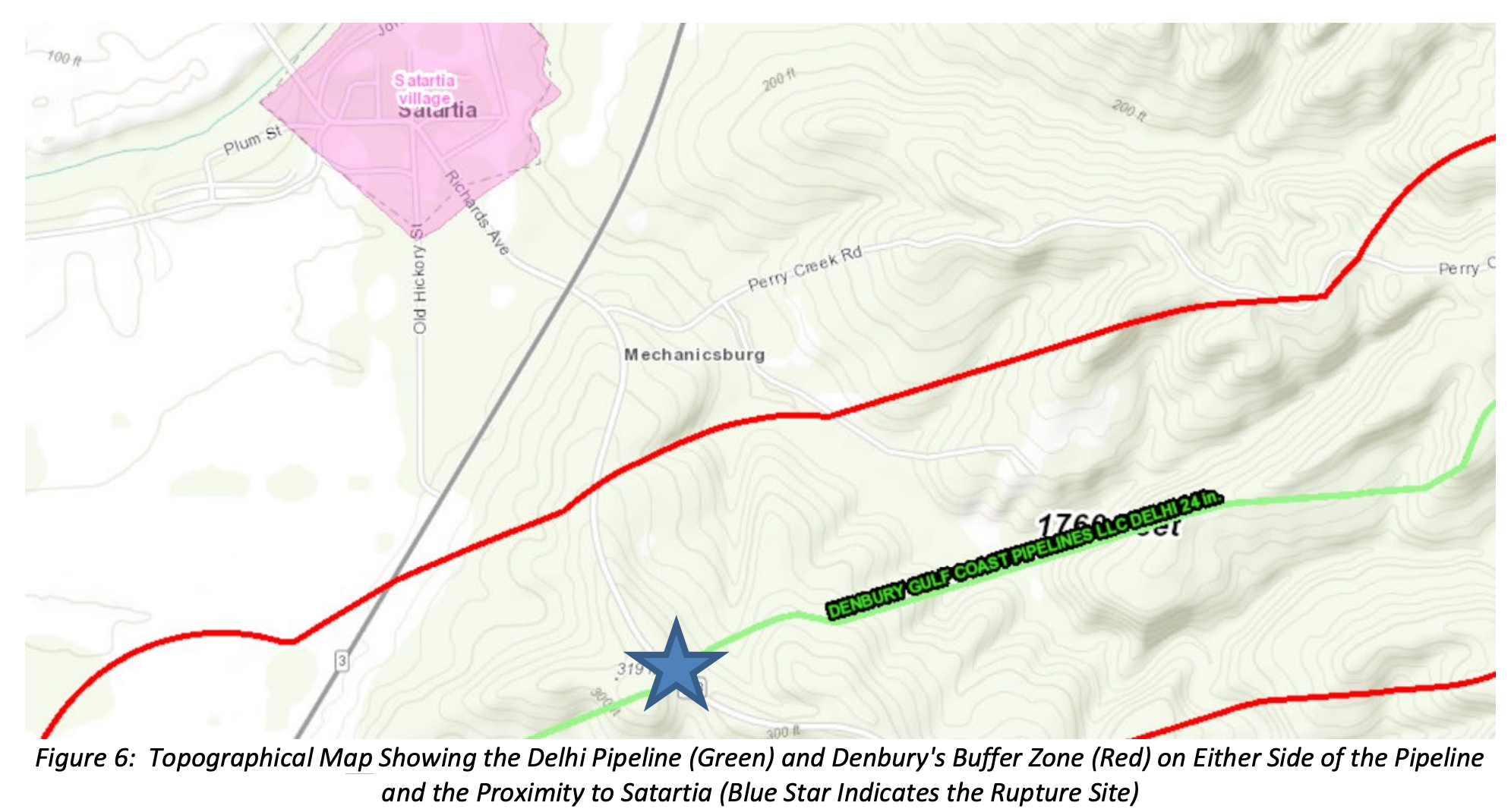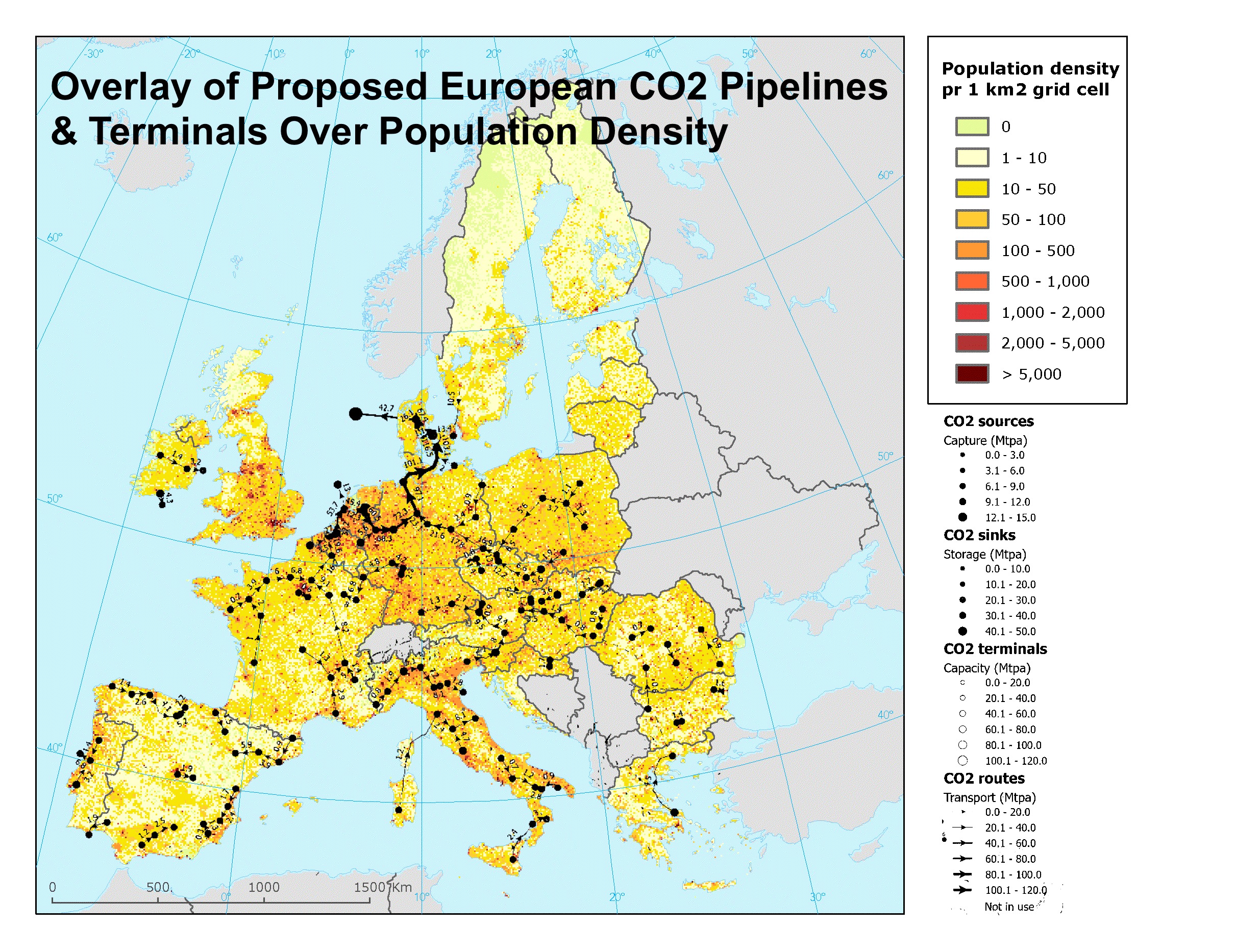Sign up for daily news updates from CleanTechnica on email. Or follow us on Google News!
In 2020, a bucolic part of western Mississippi, the tiny village of Satartia, experienced a terrifying disaster. About 300 people live in the village and surrounding area. It’s in the county of Yazoo, whose population density is 11 per square kilometer. For contrast, New York City’s density is 1,000 times that and London’s is 500 times that.
The entire village is half of a square kilometer in size. There aren’t a lot of people there or nearby. But it did have a liquid carbon dioxide pipeline running past it 1.6 kilometers from the crossroads in town. Why? Enhanced oil recovery.
In many parts of the world, but especially the southern United States, one of the primary methods of getting more oil out of tapped-out wells is to pump carbon dioxide into the well in gaseous, liquid, or even supercritical state. Like all gases at room temperature, carbon dioxide can be turned into a liquid with various combinations of compression and chilling. The supercritical state is something that behaves like both a gas and a liquid and is used for decaffeinating coffee, among other things.
The problem, of course, is getting carbon dioxide and then getting it to the well. The first part is tragically easy. Oil and gas companies get it from underground geological deposits of gases, usually mixed with natural gas. Before they figured out what to do with it, and in fact most of the time now, they separated the carbon dioxide out of the gas mixture and dumped it straight into the air.
But in the southern USA, sometimes they liquify it, put it in pipelines and pump it over to enhanced oil recovery sites. Why do they liquify it? Because gaseous carbon dioxide takes up 590 times as much space as liquid carbon dioxide for the same number of kilograms. It’s cheaper to pump liquid carbon dioxide through pipelines than gaseous carbon dioxide.
That’s what the pipeline running past the hamlet of Satartia is for. It is 123 km long and 61 inches across. It was bringing liquid carbon dioxide to an enhanced oil recovery site operated by a firm called Denbury Resources. The pipeline also had traces of hydrogen sulfide, which smells like rotten eggs.
For a few weeks before the evening of the disaster, it had rained a far amount. The ground around the pipeline shifted. The pipeline ruptured just after 7 PM on February 2022, per the US DOT Failure Investigation Report. It was loud enough to be clearly audible to people in the vicinity.

Out of the pipeline flowed the liquid carbon dioxide, which immediately expanded 590 times into a gas and flowed into the tiny town. The trace elements of hydrogen sulfide were detectable to the villagers as a distinct smell of rotten eggs, but while that gas is a nasty health hazard, that’s not what caused the problems.
No, the problem was the carbon dioxide. It’s obviously a significant problem as a greenhouse gas when it’s down around 420 parts per million, or 0.042% of the atmosphere. We breathe it in at those levels without concern.
In higher percentages, even double the current levels in the air, we start getting a bit less intelligent. Per the results of the Global CogFx study, for every 500 ppm increase in carbon dioxide, human response time slows by 1.4-1.8% and we become 2.1-2.4% less productive at mental tasks. That’s why indoor air ventilation is important, especially for any place where people are expected to be able to think normally quickly, which is pretty much everywhere humans work, live or attend school.
At even higher levels, carbon dioxide is toxic to us. The US Occupational Safety and Health Administration caps 8-hour exposure at 5,000 ppm. At that level, people won’t be thinking particularly well, but they won’t be suffering other health impacts. At 10,000 ppm, which is to say 1% of the air, people get drowsy and shouldn’t be operating equipment. At 15,000 ppm, some people start breathing more heavily to get more oxygen.
At 30,000 ppm, blood pressure, heart rate, and breathing start going up. That level of CO2 is the maximum permissible for a maximum of 15 minutes in a work week.
40,000 ppm or 4% is immediately dangerous to human health. 80,000 ppm, 8% of the air we are breathing, results in dimmed sight, sweating, tremor, unconsciousness, and possible death.
Severe carbon monoxide poisoning brings with it a strong potential for long-lasting organ and brain damage.
So what, you might think. It’s a gas. It’s already blended with the atmosphere. It will just disperse and mix with the other air and won’t be a problem. What’s this got to do with a village 1.6 kilometers away. And what does this have to do with Europe?
Carbon dioxide gas is heavier than the mixture of mostly nitrogen and oxygen in the atmosphere. While it mixes evenly as it disperses over time, when you release pure carbon dioxide it pours to the ground and spreads. If you’ve ever played with dry ice or been at a club that used it, you’ve seen the white mixture of carbon dioxide gas and water vapor spread across the floor.
And when a big pipeline carrying liquid carbon dioxide ruptures, the contents of the pipeline start gushing out and expanding 590 times into a thick sheet of carbon dioxide that pushes all of the atmosphere aside. Then it spreads, preferring to go downhill and to settle into any low-lying areas.
1.6 kilometers away from the pipeline, the people of Satartia heard the bang and thought a pipeline had blown. Then they started smelling rotten eggs. Then they started feeling nauseous. Some lost consciousness. Internal combustion cars wouldn’t start.
When it was over, a few people had lost consciousness and had to be carried away. 45 people were admitted to hospital for treatment. Another couple of hundred were evacuated. Many cars wouldn’t start and indeed cars on Highway 3, visible on the map, had trouble with their engines. Emergency vehicles couldn’t get close to the pipeline.
In the end, 21,873 barrels of liquid carbon dioxide were released. That’s about 3,500 cubic meters. That turned into about two million cubic meters of carbon dioxide gas. Thats about 530 Olympic swimming pools worth of gas. That’s about double the entire inside volume of the Houston Astrodome.
It managed to travel 1.6 kilometers, kill car engines, render people unconscious, and required hundreds of people to be evacuated — in a county with 11 people per square kilometer.
After the event, responders took air measurements inside and outside regularly. Hours after the event, some indoor air readings were still up to 28,000 parts per million. Hydrogen sulfide was not detected anywhere, and as the detectors had a sensitivity able to detect 0.1 ppm of the gas, that indicates that it was well below the level of toxicity.
Given that some people were rendered unconscious and 45 admitted to hospital, it’s highly probable that levels of gaseous carbon dioxide in the town were well over the 40,000 ppm or 4% of the atmosphere that is immediately dangerous to human health.
Over two years later, in May of 2022, the US Department of Transportation recommended a fine of $3.9 million against Denbury.
And now, to Europe.
In February 2024, the EU released a new draft roadmap for decarbonization. It targets 90% greenhouse gas emissions compared to 1990 levels by 2040. It’s very strong and worth celebrating. It’s the most aggressive roadmap by a major economy in the world. It’s inadequate, but it’s the best roadmap yet.
And it includes carbon capture, transmission, and storage. Analyses suggest 6% to 8% of the 90% goal is attributable to carbon capture, including direct air carbon capture.
Much of it is associated with industrial emissions, where some industrial sites are asserted to be too expensive to replace with low-carbon variants. This might be accurate, as even electrifying heat for cement plants still results in carbon dioxide emissions from the limestone kiln as limestone is baked into quicklime. It’s one of the few places I hold out potential for carbon capture being economically viable compared to alternatives which are currently more expensive.
There is even the potential for some of the carbon capture to be bolted onto existing or new fossil fuel power plants, something which has always been found to work poorly, require a lot of extra energy hence burning of more fossil fuels, rarely meet targets and result in uneconomically expensive electricity.
In early 2024, the EU Joint Research Commission published a report, Shaping the future CO2 transport network for Europe, on various scenarios requiring carbon capture, transmission and sequestration. It’s a hefty 89-page report.
The report finds that up to 19,000 kilometers of carbon dioxide pipelines would be required. That’s far more kilometers than high-speed rail ready tracks on the continent. That’s 80% of the length of the network of highways known as the TEN-T core networks, the ones that will be carrying electric trucks, possibly with overhead catenary electric line connections. That’s ten times the length of all of the high-voltage direct current in Europe at present.
The initial estimates — and remember, initial estimates are virtually always significantly lower than any reality — are €9.3 to €23.1 billion. If the end built cost were €50 billion, it wouldn’t surprise me. While pipelines as linear assets are low risk during construction, per Professor Bent Flyvbjerg’s data set of over 16,000 megaprojects, that’s once construction starts. Flyvbjerg devotes several chapters to the failures of estimation prior to construction starting.
As a reminder, all of the things I’m comparing the pipelines to have economic value in and of themselves, and carry goods, energy, or people, which are productive for Europe’s economy. The proposed 19,000 kilometers are waste disposal lines of no secondary economy benefit.
And those waste disposal lines would be very dangerous.

The inserted map is one I worked up this afternoon. I took the CO2 pipeline image and legend from the report from one of the several scenarios. It’s fairly representative. I used some basic image editing tools, including contrast, exposure, sharpness, and background transparency to render just the pipelines and infrastructure. I overlaid it on a 2009 European Environmental Agency population density map.
Those 19,000 kilometers are 154 times as long as the pipeline near Satartia. They travel through vastly more densely populated areas than Yazoo, Mississippi, including some of the most densely populated parts of Europe where millions live.
In the European report on carbon capture transport, was there any mention of human health risks? No. Was there any mention of the toxicity of carbon dioxide in high concentrations? No. Was there any attempt to route carbon dioxide pipelines around major population centers? No.
By definition, the most industrialized parts of Europe also have some of the highest population densities. Any carbon capture at industrial or fossil generation plants will results in thousands of kilometers of pipelines running through Europeans’ back yards.
Yet the lessons of Satartia, a tiny village in a barely populated county of western Mississippi, a state the size of England but with only 5% of the population, aren’t even being considered.
What are those lessons? That carbon dioxide pipelines rupture, just as other pipelines do. That when they rupture, the carbon dioxide expands to 590 times the volume very quickly. That the carbon dioxide pools on the ground for long hours and can travel kilometers. That it will be in sufficient concentrations to potentially kill people and definitely render them unconscious as well as leave them with long-lasting brain and organ damage.
And that the liabilities in any event in an even moderately populated European area would be in the hundreds of millions or billions of euros.
This Achilles heel of carbon capture and sequestration is avoided by proponents whenever possible. An 89-page EU report on the subject never mentions it once. It doesn’t appear that any decisions makers in the EU are even aware of this. This is far from the only problem with carbon capture.
But as soon as they start proposing pipelines through even moderately populated areas, they’ll run into roadblocks so profound that it would be remarkable if any were built. Let’s hope iterations of this become more rational.
Have a tip for CleanTechnica? Want to advertise? Want to suggest a guest for our CleanTech Talk podcast? Contact us here.
Latest CleanTechnica TV Video
I don’t like paywalls. You don’t like paywalls. Who likes paywalls? Here at CleanTechnica, we implemented a limited paywall for a while, but it always felt wrong — and it was always tough to decide what we should put behind there. In theory, your most exclusive and best content goes behind a paywall. But then fewer people read it!! So, we’ve decided to completely nix paywalls here at CleanTechnica. But…
Thank you!
CleanTechnica uses affiliate links. See our policy here.




